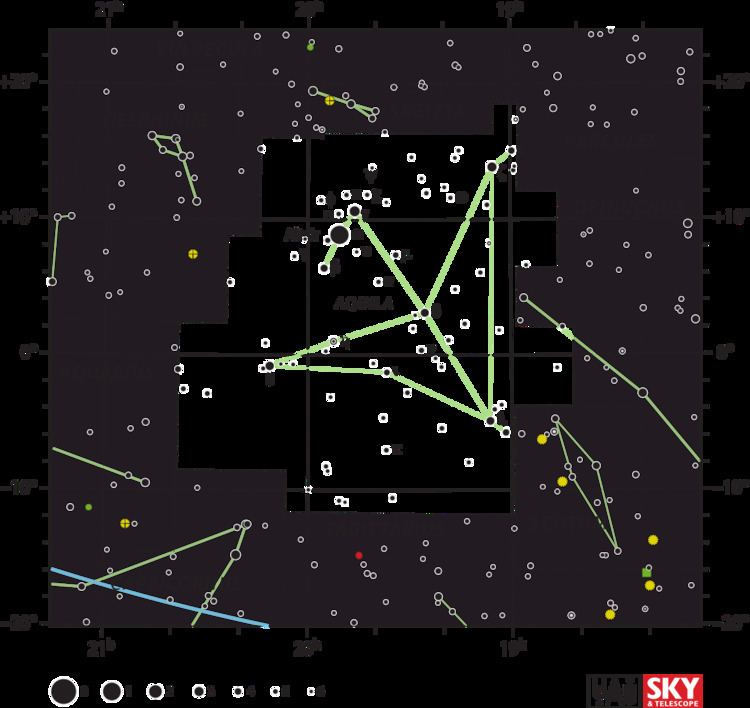Magnitude 5.28 | ||
 | ||
People also search for Tau Aquilae, Upsilon Aquilae, Phi Aquilae | ||
Chi Aquilae (χ Aql, χ Aquilae) is the Bayer designation for a binary star in the equatorial constellation of Aquila, the eagle. This system is bright enough to be seen with the naked eye at a combined visual magnitude of +5.29. Based upon parallax measurements made during the Hipparcos mission, Chi Aquilae is at a distance of approximately 900 light-years (280 parsecs) from Earth.
The two components of χ Aquilae can be separated in the spectrum and their relative brightness has been measured, but their other properties are uncertain. The cool component is a G2 bright giant or supergiant and is visually brighter than the hot component, so it is treated as the primary. The hot component is a late B or A type star, presumed to be a main sequence star.
The observed spectrum of the primary star is G2 Ib, a yellow supergiant. It is calculated to have an absolute magnitude of −2.1. The secondary is observed to have a spectral type of B5.5 and is expected to be a main sequence star with an absolute magnitude of −1. However, the brightness difference between a G2 supergiant and a B5.5 dwarf is expected to be larger. It is unclear whether the primary is not a supergiant or the secondary is brighter than a main sequence star.
As of 2004, the secondary is located at an angular separation of 0.418 arcseconds along a position angle of 76.7° from the primary. The separation and position angle are both decreasing.
